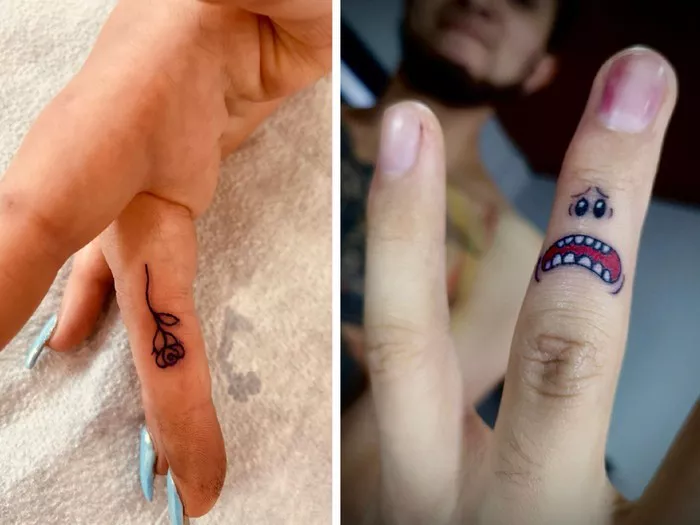Finger tattoos have surged in popularity as individuals seek unique and discreet forms of self-expression. Admired for their minimalist aesthetic and the ability to convey personal symbolism in a small space, finger tattoos nevertheless present distinct challenges when it comes to durability and maintenance. Unlike tattoos placed on other parts of the body, finger tattoos are particularly prone to fading due to the skin’s unique characteristics and constant exposure to environmental factors.
Understanding the Nature of Finger Tattoos
The skin on fingers differs significantly from that on other body parts. It is thinner, contains fewer layers of fat, and lacks the robustness that helps tattoos elsewhere maintain their vibrancy over time. Moreover, the hands and fingers are in constant motion, subjecting tattoos to frequent stretching and bending. These movements can cause the ink to disperse more quickly, contributing to faster fading compared to tattoos on less dynamic areas of the body.
Factors Influencing the Longevity of Finger Tattoos
Several key factors influence how long a finger tattoo will retain its clarity and vibrancy:
1. Skin Composition: The thinness of the skin on fingers makes it more susceptible to wear and tear. With less cushioning from fat layers, tattoos placed on this area may appear more prominent initially but are also prone to quicker fading.
2. Daily Wear and Tear: Fingers are involved in almost every physical activity, from typing on keyboards to grasping objects. This constant movement causes friction against the tattoo, accelerating the breakdown of ink particles.
3. Exposure to Elements: Finger tattoos are exposed to frequent washing, which can weaken the ink bonds. Moreover, exposure to sunlight and harsh weather conditions can cause pigments to break down over time, leading to noticeable fading.
See Also: Top 5 Best Tattoo Numbing Cream 2024
4. Quality of Ink and Technique: The durability of a finger tattoo also depends on the quality of ink used and the skill of the tattoo artist. High-quality ink and proper tattooing techniques can contribute to a longer-lasting tattoo.
5. Aftercare Practices: Proper aftercare is crucial for the longevity of any tattoo. Failing to follow aftercare instructions carefully can lead to complications during the healing process, potentially affecting the tattoo’s final appearance and lifespan.
Typical Lifespan of Finger Tattoos
While individual experiences may vary, finger tattoos generally have a shorter lifespan compared to tattoos placed on other parts of the body. On average, a well-executed finger tattoo can retain its sharpness and color for approximately 2 to 5 years before showing noticeable signs of fading. However, this timeframe can vary widely based on factors such as skin type, aftercare practices, and exposure to environmental elements.
Strategies for Extending the Lifespan of Finger Tattoos
To prolong the longevity of your finger tattoo, consider implementing the following strategies:
Choose a Skilled Tattoo Artist: Select an experienced tattoo artist who specializes in finger tattoos and understands the unique challenges posed by this location.
Follow Proper Aftercare: Adhere strictly to aftercare instructions provided by your tattoo artist, including cleaning, moisturizing, and protecting the tattoo from excessive sun exposure during the healing period.
Protect from Sunlight: Apply sunscreen to your finger tattoo when outdoors to shield it from harmful UV rays, which can accelerate ink fading.
Avoid Excessive Moisture: Minimize prolonged exposure to water, especially during the initial healing phase, to prevent the ink from washing out prematurely.
Consider Touch-Ups: Plan for periodic touch-up sessions with your tattoo artist to refresh the tattoo’s colors and lines as they begin to fade over time.
Conclusion
In conclusion, while finger tattoos offer a distinctive and personal form of self-expression, they require careful consideration due to their tendency to fade more quickly than tattoos placed on other body parts. By understanding the factors influencing their longevity and implementing proper care and maintenance practices, individuals can maximize the lifespan of their finger tattoos and enjoy their aesthetic appeal for years to come. Despite their challenges, finger tattoos remain a popular choice for those seeking subtle yet meaningful ink artistry on their hands.

